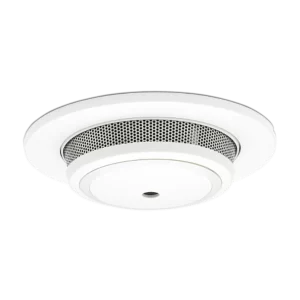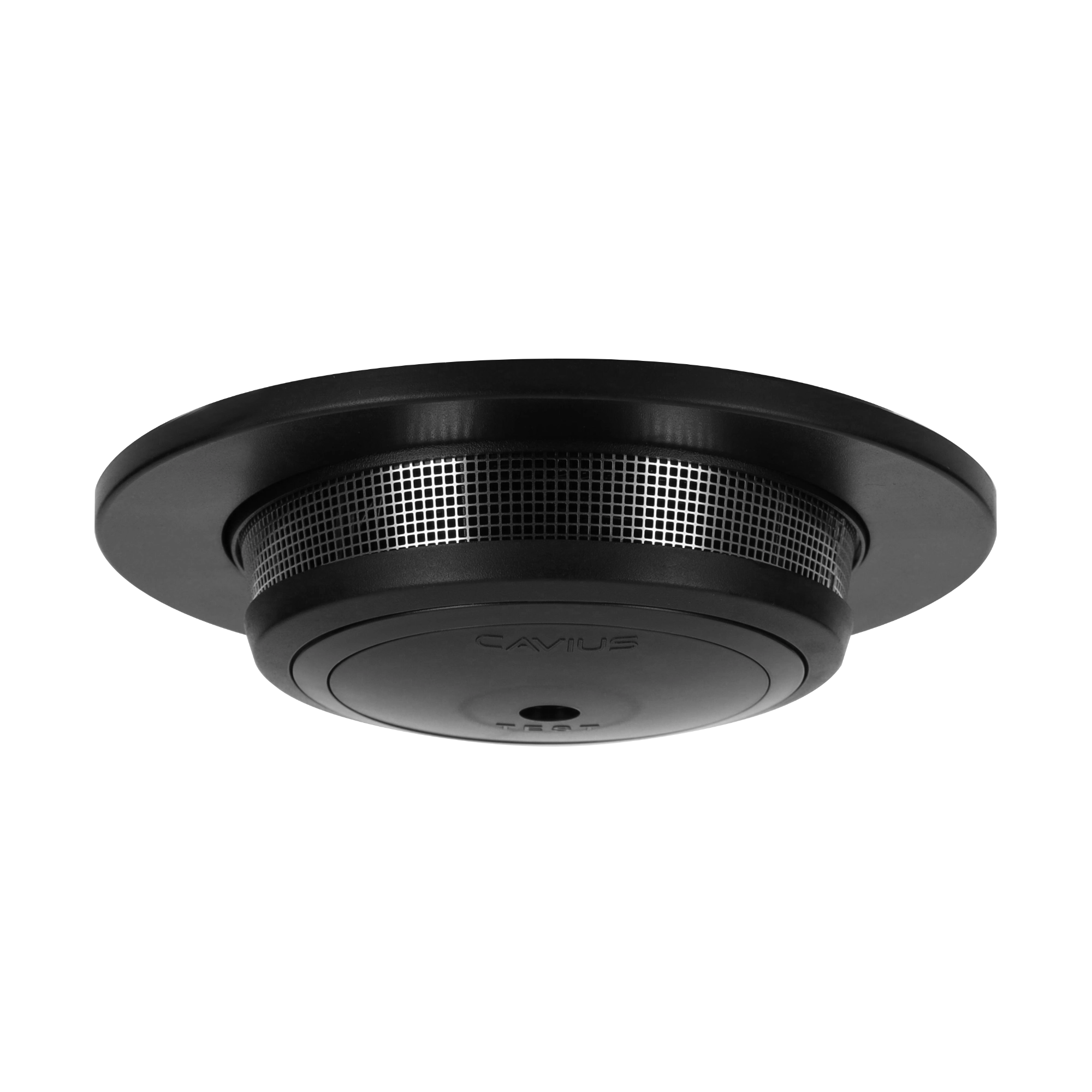Welcome to the CAVIUS Support page. Here we provide some quick answers to regular questions regarding support for your existing smoke alarm. Further down this page we have video tutorials on everything you need to know. We are here to help, so if you cant find the answers you need below please do not hesitate to drop us an email or give us a call.
1All smoke alarms need a little love from time to time, regardless of brand, to ensure you avoid annoying nuisance alarms. Due to their location on the ceiling, and the need for air to flow through them, it is inevitable that they will collect dust, fly spots, webs and insect deposits which can block the mesh and reduce airflow through the alarm or dust can settle in the smoke chamber.
If you are experiencing any issues with your smoke alarm, in particular nuisance alarms, then we are here to help. But before you call us we ask you to follow the Troubleshooting guide below. We have found that 90% of all calls relating to nuisance alarms are resolved just by following the simple maintenance steps in the guide below.
Regular Maintenance:
For your alarms to be the most effective they should be vacuum cleaned once per quarter, ideally with the brush attachment. Ensure you run this around the chamber filter / mesh area of the alarm and not just the audio hole on the bottom. They should also be wiped with a slightly damp cloth (do not open the alarm). Test the smoke alarm once per month by pushing the test button. The smoke alarm should produce a loud alarm tone.
If you are getting nuisance alarms then this simple and quick fix generally alleviates 95% of false alarms. On occasions dust or bugs can find their way inside the chamber and scatter the optical light – activating the alarm (this can occur any time – from the first week to the 10th year) All photoelectric smoke alarms, no matter the brand, require maintenance from time to time. To stop nuisance alarms simply run a vacuum cleaner, with a brush attachment on the lowest setting, around the outside of the alarm near the chamber filter (silver mesh). Do not open up the alarm. Ensure the alarm is in the base, wait 10 seconds and then test. See this How To Video
High Humidity or Temperature: All AS3786:2104 alarms are tested to over +90% Rh non-condensing humidity. Our alarms have been designed to live in 95% humidity, however any higher percentage in the atmosphere, condensation forms inside the chamber and interferes with the PCB – causing the alarm to siren. There is also an optimal temperature range a smoke alarm can live within (most brands this is around the +5 – 38 degrees mark). If the temperature is outside of this range , this can also cause false alarms. Unfortunately, there isn’t a fix here as you can’t control the weather. If humidity is causing a false alarm, either blowing a hairdryer with warm air through the chamber filter can dry off the PCB or turn on your heat pump to ‘dry’ mode.
Steam Or Cooking can cause nuisance alarms once it passes through the chamber. This is likely a location issue if occurring regularly and we recommend installing the alarm as far away from a bathroom or kitchen area as possible to avoid this issue.
Areas to avoid when installing smoke alarms:
To download one of our product User Guides and Data Sheets, please click below.



First you can press the hush button on your alarm, this will pause the alarm for 10 minutes. 95% of the time, false alarms can be alleviated with some simple maintenance. Dust or insects can enter the smoke chamber and cause false alarms, this can be solved by vacuuming around the mesh chamber on a low setting.The other reason for false alarms maybe humidity or the location is too close to the bathroom, steam will set off all smoke alarms. In this case, its best to relocate the smoke alarm away from the bathroom.
After installation, its best practice to test your alarm by pressing the test button (this is the entire bottom surface of the alarm). You may need to wait 8 seconds for the alarm to power up.To maintain your smoke alarm, vacuum around the smoke chamber regularly. Dust may accumulate inside the mesh even if it looks clean outside.
Do not use water or households’ products to clean your product.
CAVIUS and the New Zealand Fire & Emergency Service recommend one in every room. To obtain NZ Building Code compliance, contact your local council.
The best location for any smoke alarm is on the ceiling and in the centre of the room they are intended to protect. The alarm will operate normally if installed on a wall, however this can add minutes to the detection time, which are valuable in the event of a fire.We recommend installing the alarm at least 30cm from the corner where the ceiling and wall join and 50cm from the apex of a cathedral ceiling.Both of these areas are referred to as ‘Dead Air Zones’, with ‘Dead Air Zones’, oxygen will gather in these areas.
New Zealand accepts European Standard EN14604 and Australian Standard AS3786 certifications. Never install a smoke alarm without a smoke alarm certification.
The higher price of smoke alarms often reflects the quality of the components used and will often contain a longer battery life. The more level of quality, the higher the cost becomes. All CAVIUS alarms are 100% tested for sensitivity, sounds, power consumption and many other points. The manufacturing set up is audited by AFNOR and CNPP from France, one of the worlds best test institutes. Samples from all production batches are sent to an independent testing institute for additional testing – all to secure the worlds safest alarms for you.
All smoke alarms have a 10 year lifetime and expiry date. You will find the CAVIUS expiry date on the product label at the base of the alarm
Ensure the alarm is clicked firmly into the mounting base. The red activation button needs to pressed down entirely to power the alarm.
We recommend that you do a visual check (the LED will flash every 48 seconds indicating the alarm is operational) every week. We also recommend pressing the test button on the alarm once per month
A short beep every 48 seconds may indicate the end of life of you battery. If the alarm is well before the 10 year life, the alarm may not quite be clicked into the base properly. Take the alarm out and re-click back into the base. You should hear and feel the click – similar to a seat belt.
Alert young children and seniors.Leave the house following the escape route. Every second is important, do not loose time collecting valuable objects.Stay close to the ground if the air is charged with smoke. Do not breathe completely and cover your mouth with a wet cloth if possible.Once outside your house, call emergency services.
Smoke alarm is an electronic fire security device which will early sense smoke to warn occupants with a loud siren so they can get out before being intoxicated by smoke. (80% of fire deaths are due to inhalation of toxic smoke)
All our Wireless Family products contain an RF module built inside and are on the same frequency – 926.365 MHz. All Wireless Family products (even discontinued models) will interconnect with each other.Here is a list of our Wireless Family products: 2203 CAVMP (2203-002), 2107 CAV10WF (2107-001), 3104 CAVTH5WF (3104-001), 2104 CAV5WF (2104-001) and 9002 CAVSR (9002-001).
The alarm won’t interconnect with the other Wireless Family alarms:
On Point Distribution Partners Ltd
58a Poplar Lane, Papamoa, Bay Of Plenty 3187
Hours; Monday – Friday 8.30am – 5pm
Contact: +64 7 5738670 info@cavius.co.nz
2025 CAVIUS. All right reserved.